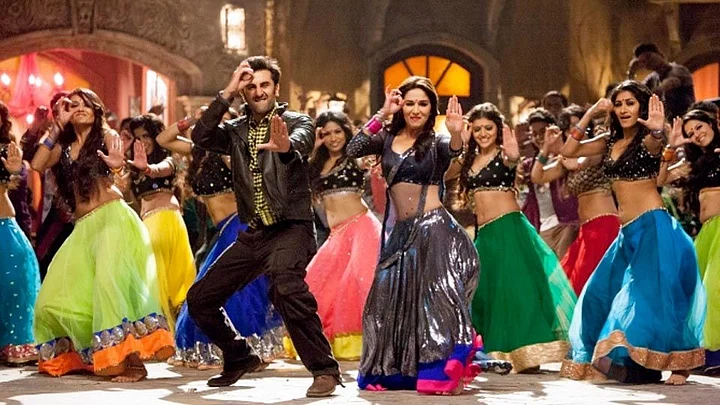Last month, the Producers Guild of India presented a 36-page guideline that outlined a methodology for film and television shoots to resume. Beyond the basic hygiene practices of social distancing and wearing masks, the new SOP (Standard Operating Procedure) has specific rules – sets divided into ‘zones’, staggered meal times and disallowing anyone above the age of 60. The overarching recommendation, though, has been to cut the number of people on a set at any given point.
Depending on the scale of a film, sets can have anywhere between 300-500 people including crew, main cast, junior artistes and stuntmen.
A very significant percentage of this number are daily wage workers who could be the carpenter who builds the sets, the dress dada who irons outfit or the lightman who makes sure that the light doesn’t topple over. Since the beginning of the lockdown in March, industrywallas have been talking about the welfare of these essentials but rarely acknowledged members of the film industry. The conversation has been around getting back to work, so these daily wage workers can start earning once again. The problem, though, is that the new SOPs cut out those very people.
A director, who is gearing up to start shooting as soon as the lockdown ends and didn’t want to be named, says, “When I am asked to cut down the size of my crew, I am not going to cut out the cinematographer, the set designer or my chief assistant. I am going to cut out the background dancers, the tape dada or people from the catering services. I know no one has worked for two months but when shooting starts and a significant percentage of the crew can’t return, they would have effectively lost their jobs”.
Almost every single step in filmmaking is collaborative. And, each cog helps the machinery operate smoothly. Tanvi Gandhi, executive producer of films such as Super 30 and Mardaani 2, explains what ‘regular’ shoot days used to be:
“On a regular shoot day, there is a production team of around 20 people. Every set has multiple generators, vanity vans and trucks with technical equipment, production material and costumes. These are hired from different companies and each of them has two people.Tanvi Gandhi, Executive Producer
She adds, “The catering department normally has about seven people serving food and water at any time. Depending on the size of the film, the art department could have anything from 50-80 carpenters. All this adds up”. The only time when the crew is pared down to bare minimum is when an intimate scene is being filmed indoors. Even then there are at least 30-40 people on set.
Apart from members of the crew, another subsection of daily wage workers that will get impacted are the background dancers. “Even when shooting starts again, dancers like me aren’t going to be employed for a long time. If they start shooting songs, I don’t see anyone having 50-70 dancers in the background. How will they if the maximum number of people allowed on a set is 100? There are hundreds of dancers like me in the city. Also, many dance masters take a commission from dancers for hiring them. Even if a dance master is allowed to hire background dancers, we’ll have to pay more commission,” says Rita (name changed on request), a dancer who has been in the industry for over a decade.
From ‘Ek Do Teen’ (Tezaab) to ‘Dola Re Dola’ (Devdas) and, more recently ‘Tabaah Ho Gaye’ (Kalank), veteran choreographer Saroj Khan knows a thing or two about working with dozens of background dancers.
“Nowadays, every song has 100-200 dancers. If these [new] guidelines are used to shoot, the songs will have to become smaller. Dancers will be unemployed. It’s very sad but if this is what the rule is, what can anyone do? Of course, dance masters will have to work harder because they won’t be able to use scale to awe the audience; they’ll have to use technique”.Saroj Khan, choreographer
There is still no clarity about when shooting will start again in Bollywood, and all the film associations are still working hard at figuring out the most practical practices to keep their members safe and employed in the near future. “The guidelines suggest almost completely avoiding junior artistes and it’s definitely created a panic situation,” says Ashok Dubey, General Secretary of the Federation of Western India Cine Employees. Even as he coordinates with different film associations, Dubey says he is also fielding calls from junior artistes and background dancers every day. “I tell them that producers will cut down but they can’t completely do away with junior artistes. Instead of using hundreds, they will use 10-15. At least some people will get employed. We can only hope that the situation goes back to normal soon,” he adds.
Yes, these are tough times and yes, solutions must be found. But the next time you hear a producer or industry heavyweight talk about the urgency to return to work because daily wage workers need employment, remember that they’re just a convenient excuse. Producers want their films to get back on the floors and the current guidelines seem to be the only route here. These guidelines, however, will put the heart and soul of this industry out of jobs. And once sets become bare-boned, there is no way we are going to have the same pre-COVID staff when (and if) the world goes back to normal. These jobs could be lost forever.
(At The Quint, we question everything. Play an active role in shaping our journalism by becoming a member today.)
